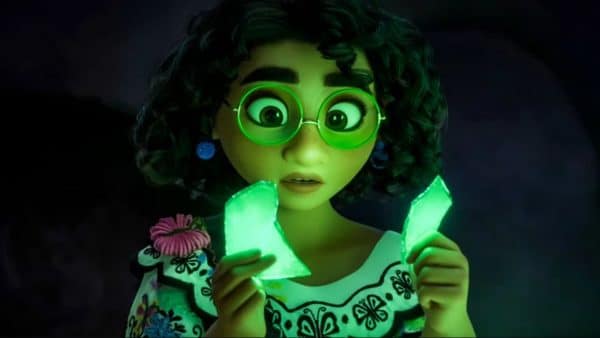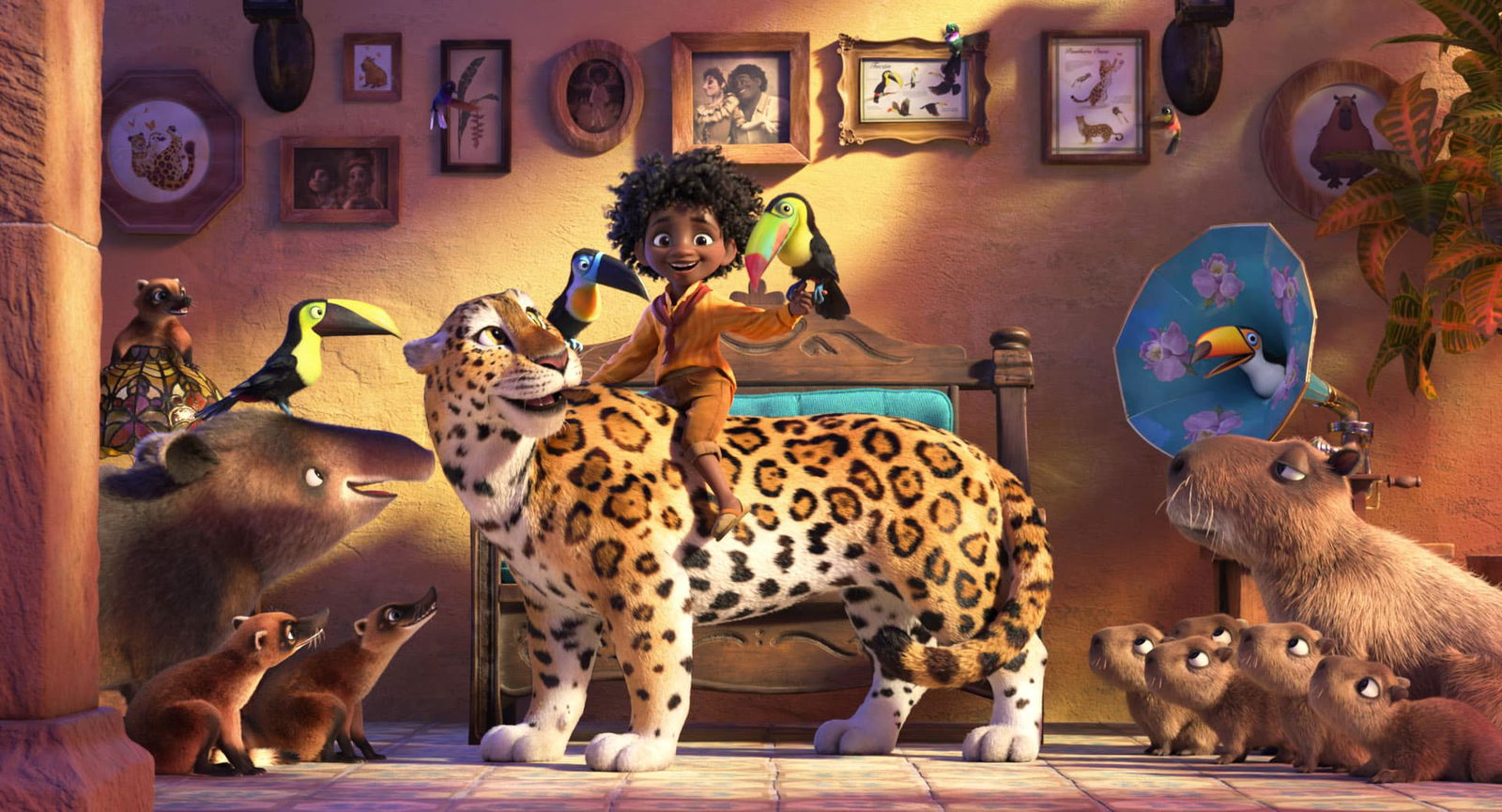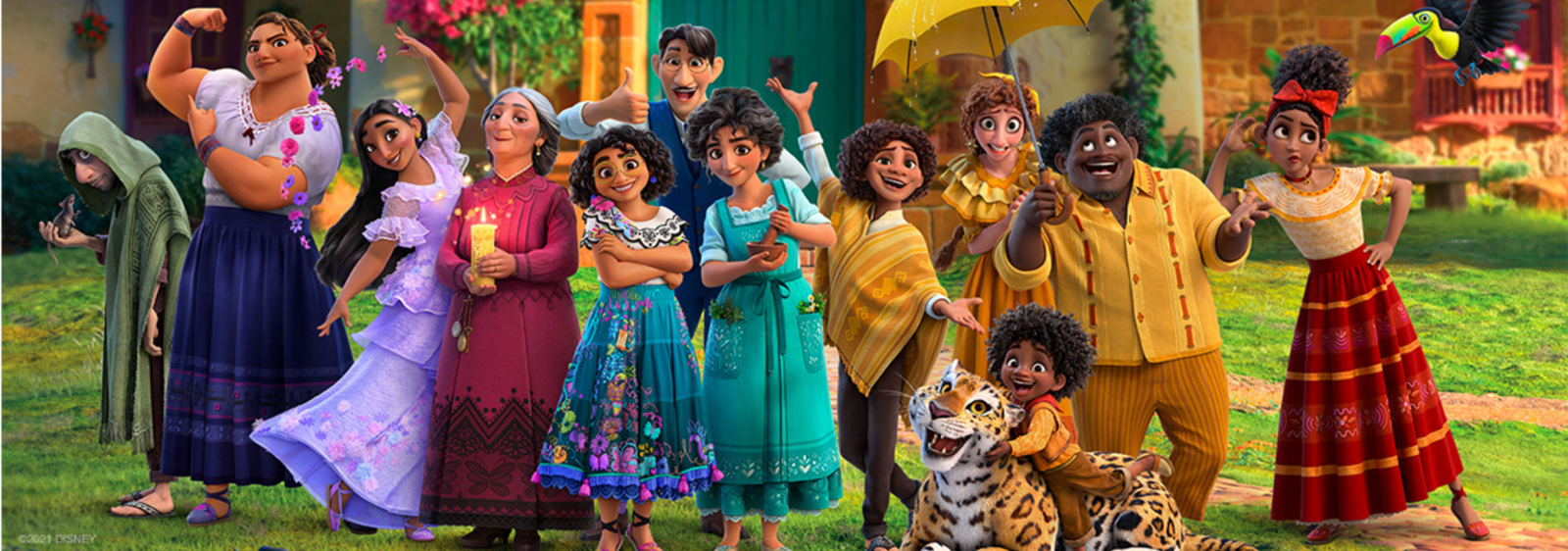Cheers for Encanto
Encanto released in November of 2021, but I am just now beginning to see reviews, thoughts, and what not about the Disney film. We can talk about how the marketing team dropped the ball around Encanto another time, but note the marketing was not abundant for this film or I was living under a rock during the press releases.
Encanto is easily one of Disney’s top movies of all time. If you cannot tell, I have some very strong feelings for this film.The imagery. The music. The culture. The representation. The story. It was all so beautiful!
This post may or may not include spoilers; just warning you.
Encanto is set in the mountains of Colombia and features the Madrigal family. It wouldn’t be Disney without a little bit of magic and each member of the Madrigal family is blessed with a magical gift during childhood, except one member: Mirabel. Mirabel rollercoasters her way through her family’s expectations and disappointments with never ending optimism and hope until she finds herself at the center of her missing Uncle Bruno’s vision. Mirabel follows a false lead in trying not to make the vision come true while trying to save her family and their magic.
With that brief overview, I’m sure you see can how this story will develop but I’m not here to give you a play by play of the film. I’m here to tell you what I loved about Encanto.

The Storyline
In recent years, Disney has moved beyond having an actual “villain”, instead opting for actual real life problems/circumstances taking the place of an antagonist character. I’m not mad at the direction. This newfound direction hosts an infinite collection of inclusive stories to be created and shared, which is how we are able to witness the magic of what is Encanto. In the beginning half of the movie, you gather that the story revolves around family and the importance of maintaining the balance of familial roles and traditions. It basically says to never go against family for the sake of an individual. BUT THEN, something amazing happens. The way this story unfolds is truly remarkable and I’m trying my hardest to not spoil it. The family gets a lesson in communication, respect, and embracing change. With lessons ranging from resting from work to stop chasing perfection, the lessons are abundant.
If you really take the time to understand the conflict between Mirabel and Abuela, then you will find the true story is centered around generational traumas and collective healing. I don’t know about non-BIPOC or even other POC family dynamics, but I do know for Black families there has been this disconnect between younger and older generations with a lack of communication, respect, and openness. This plot was especially relevant to me because I could easily see my family sinking into these character roles.
The Representation
Although I don’t share the same fondness for Disney’s Soul, I do love the inclusivity of body shapes and skin complexions and the attention to detail to facial features that both Encanto and Soul share. There has been this viral image of this young boy who shares an uncanny resemblance to Antonio from the film. Honestly, it’s the cutest thing, but what’s most important is that the child saw himself in a cartoon character FOR THE FIRST TIME. With animated films, we typically see very cookie-cutter depictions (usually stereotypical) of BIPOC characters, but Disney did their homework, this time.
In addition to the cookie-cutter depictions, we also usually receive European adjacent Latine and Hispanic ethnicities pushed to the forefront in film. Lighter complexions, slimmer but shapely bodies, thin facial features, straight hair, and yada yada yada. But Encanto said NO! There are characters with full bodies, ranges of melanated skin, full lips, noses, and wide eyes with beautiful textured tresses to match. The range of diversity is phenomenal. It’s not enough to be represented; there has to be representation that is realistic. Realistic like how the production crew reflected the animated characters. Watching the end credits and scrolling the net, I noticed that much of the production crew was a reflection of Encanto, not for the most part being solely Colombian but of Latine or Hispanic ethnicity.

The Culture
I am not Colombian but I can tell that the creators of Encanto did their darndest to paint Colombia in the light that it deservesL the vibrant colors that just shout joy, the infectious music that just makes you swing your hips and shimmy your shoulders. When the Encanto characters sing, it is imperative that you dance! The traditional clothing that makes you yearn to pull out your own cultural garb. The setting was beyond beautiful with breathtaking architecture, landscape, and flora. With all of this beauty, they didn’t forget to include a kid-friendly view on the unfortunate history and displacement of the Madrigal family. Many BIPOC groups are often displaced and it was great to see that they didn’t decide to brush that reality to the side. I’ve watched other films and shows set in Colombia and it’s typically very dark and violent, so this was a nice perspective to gain.
It was a pleasure to see another group of people being represented, to be given a chance to see themselves reflected on screen. As a Black mom, I know that film creators won’t always get the story or depictions 100% correct but I can commend the effort of them not falling into the stereotypical and racial pits. Encanto was filled with so many points that I didn’t get to touch on but that’s a good thing. It wasn’t your typical cliche Disney film; it was truly a film of substance.









